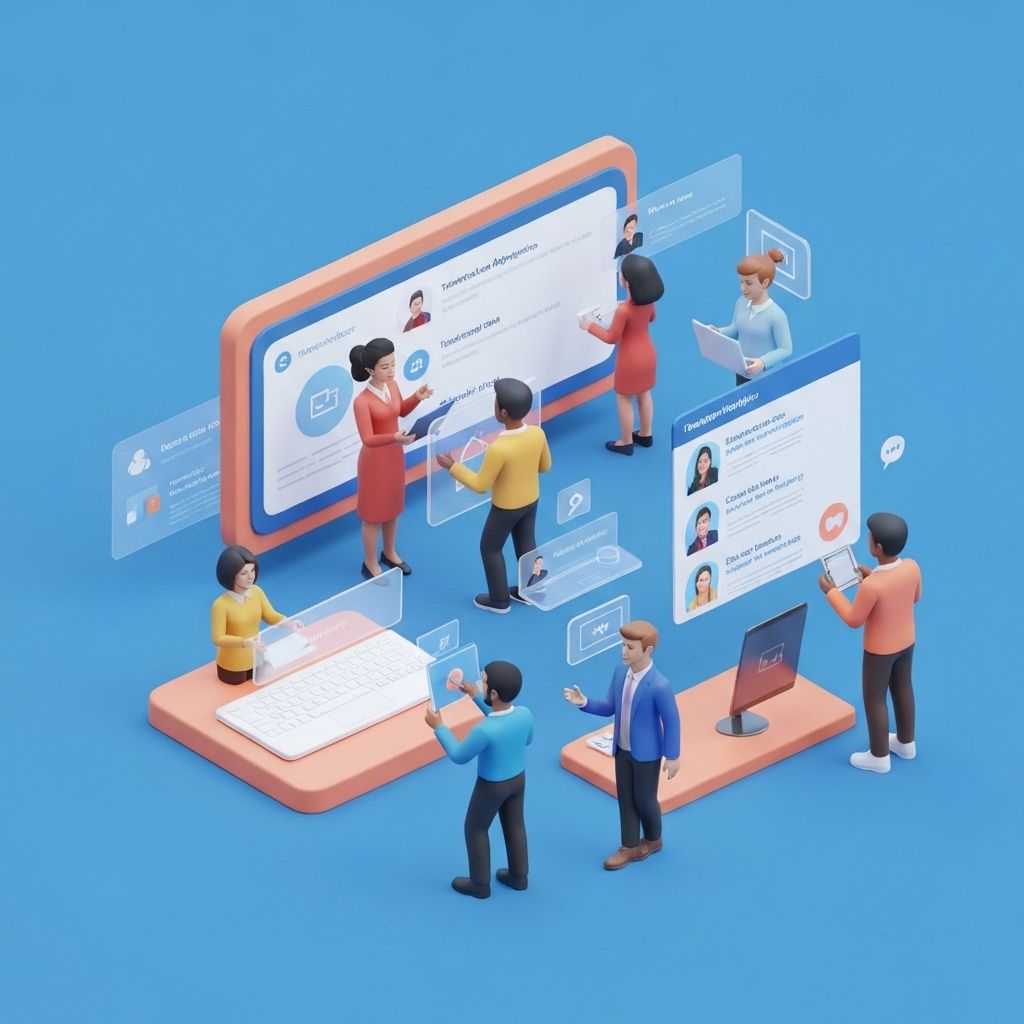Building Diverse Teams: Beyond the Resume - Inclusive Hiring for Innovation


In today's competitive business landscape, diverse teams aren't just a moral imperative—they're a strategic advantage. Companies with diverse workforces are 35% more likely to outperform their competitors and generate 19% higher revenue through innovation. Yet building truly diverse teams requires more than good intentions; it demands systematic changes to every aspect of your hiring process.
This comprehensive guide will walk you through proven strategies for creating inclusive hiring processes that attract, evaluate, and retain diverse talent while maintaining the highest standards of excellence.
Strategic Insight: Organizations that implement comprehensive diversity recruitment strategies see 45% higher employee retention rates and 70% greater success in capturing new markets, according to recent industry analysis.
Before diving into implementation strategies, it's crucial to understand why diversity matters for your bottom line and competitive positioning.
The correlation between diverse team performance and business success is no longer debatable—it's a proven competitive advantage that forward-thinking organizations are leveraging for market leadership.
Your job description is often the first point of contact with potential candidates. Unfortunately, many job postings contain subtle biases that discourage diverse applicants from applying.
Implementation Tip: Use AI-powered tools to analyze your job descriptions for biased language and ensure they appeal to a diverse candidate pool. Companies that implement bias-free job descriptions see 30% more applications from underrepresented groups.
Unstructured interviews and subjective evaluation criteria are breeding grounds for unconscious bias. Creating standardized processes ensures fair evaluation of all candidates.
Develop scoring criteria for each role and train all interviewers on objective evaluation
Ensure all candidates for the same role answer identical questions for fair comparison
Include multiple perspectives to reduce individual bias in evaluation
Use "tell me about a time when..." questions to reveal actual capabilities
| Evaluation Area | Objective Criteria | Scoring Scale |
|---|---|---|
| Technical Skills | Demonstrated through work samples, tests, or portfolio review | 1-5 (based on role requirements) |
| Problem-Solving | Response to case studies or situational questions | 1-5 (clarity, creativity, effectiveness) |
| Collaboration | Examples of team projects and conflict resolution | 1-5 (specific examples and outcomes) |
| Cultural Add | Unique perspectives and experiences they bring | 1-5 (diversity of thought and experience) |
Traditional recruitment channels often perpetuate existing patterns. To build diverse teams, you need to cast a wider net and engage with communities that have been historically underrepresented.
Transform traditional referral programs to encourage diverse candidate recommendations:
What gets measured gets managed. Establishing clear diversity metrics and regularly reporting on progress is essential for maintaining accountability and driving continuous improvement.
Effective diversity initiatives require clear ownership and accountability:
Hiring diverse talent is only the first step. Creating an inclusive environment that supports retention and growth is crucial for long-term success.
Proven Retention Strategies for Diverse Talent
Implementing effective diversity initiatives often involves navigating specific challenges and objections.
| Challenge | Myth | Reality & Response |
|---|---|---|
| "Lowering the Bar" | Diversity means compromising on quality | Diverse hiring expands the talent pool and brings different strengths - it's about finding the best talent, not settling |
| "Pipeline Problem" | There aren't enough qualified diverse candidates | The talent exists but may be found through non-traditional channels - requires expanded sourcing strategies |
| "Cultural Fit" | Diverse candidates won't fit the company culture | Focus on "cultural add" rather than "cultural fit" - diverse perspectives strengthen organizational culture |
| "Tokenism Concerns" | Diversity hires will feel tokenized | Create genuine inclusion through mentorship, sponsorship, and equal opportunity for advancement |
Building diverse teams is not just about checking boxes or meeting quotas—it's about creating organizations that are more innovative, resilient, and successful. The strategies outlined in this guide provide a roadmap for transforming your hiring processes to be more inclusive and effective.
Remember that diversity and inclusion work is ongoing. It requires commitment, resources, and a willingness to continuously learn and adapt. The companies that succeed in building truly diverse teams are those that make it a core part of their business strategy, not just an HR initiative.
Strategic Imperative: By implementing these evidence-based inclusive hiring solutions and working with partners who understand the importance of diversity, you can build teams that not only reflect the world around you but also drive your business forward through the power of diverse perspectives and experiences.
Most organizations see initial improvements in candidate diversity within 3-6 months of implementing structured processes. However, building a truly diverse and inclusive culture typically takes 12-18 months of consistent effort and measurement.
Diversity refers to the representation of different groups in your workforce, while inclusion is about creating an environment where all employees feel valued, respected, and able to contribute their unique perspectives. You need both for success.
Track metrics like employee retention rates, innovation metrics (patents, new product launches), employee engagement scores, and business performance indicators. Companies with diverse teams typically see 19% higher revenue and 35% better performance.
Start with an honest assessment of your current state, then focus on expanding your sourcing channels and implementing bias-free processes. Consider partnering with diversity-focused recruitment agencies and employee resource groups to accelerate progress.
Our diversity and inclusion experts can help you design and implement proven strategies for building high-performing, diverse teams that drive innovation and business success.
Explore Our Diversity Hiring Solutions Learn More About Our Services